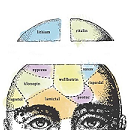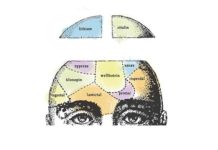Ronald Pies Doubles Down (And Why We Should Care)
This past Saturday, I was on my way back from Europe to Boston, and while on a stop in Iceland, I checked my email and was directed to a new blog by Ronald Pies in Psychiatric Times, in which he once again revisited the question of whether American psychiatry, and the American Psychiatric Association (APA), ever promoted the idea that chemical imbalances caused mental disorders. And just like when I read his 2011 writings on this subject, I found myself wondering what to make of his post. Why was he so intent on maintaining psychiatry’s “innocence?” And why did it matter?
Pennsylvania Foster Kids Prescribed Too Many Psychotropic Drugs
Amid growing criticism about the over-prescription of psychotropic medication in foster care, Pennsylvania commissioned PolicyLab to conduct an analysis of the use of psychiatric drugs among all of the state’s Medicaid-enrolled children. The report, released in June, found that the rate of psychotropic prescriptions among youth in Medicaid and foster care was higher than previously reported.
An “Epidemic of Anguish” on College Campuses?
The Chronicle of Education has called the soaring rates of anxiety and depression among college student an “Epidemic of Anguish.” PBS interviews Jennifer Ruark, the editor of the Chronicle series, and Micky Sharma, the director of counseling at Ohio State University. Ruark reports that about “1 in 4 students reporting to campus counseling centers now are already on some kind of psychotropic medication.” Sharma adds that “just because a student is crying does not mean he or she needs psychotherapy. Sometimes that’s actually the type of emotional response that I would want to see.”
“Mental Illness and Gun Violence: Stigmatizing People Isn’t the Answer”
In an opinion piece for care2, Katie Medlock discusses how “mental illness” awareness campaigns have shifted, dangerously, “and ended up insinuating that people with mental illness could turn on ‘us’ at any time and should be feared.”
“Antipsychotic Use in Youth Without Psychosis: A Double-edged Sword”
This month’s issue of JAMA Psychiatry ran an editorial commenting on recent research revealing that the majority of youth prescribed antipsychotics have not been diagnosed with a mental disorder.
“California Moves to Stop Misuse of Psychiatric Meds in Foster Care”
On Tuesday, NPR told the story of DeAngelo Cortijo. DeAngelo became a foster kid at age 3 after his mother attempted suicide. He was “diagnosed with bipolar and anxiety disorders, attachment disorder, intermittent explosive disorder or posttraumatic stress disorder,” and was prescribed “a combination of antipsychotics, antidepressants and stimulants, and was told that taking them was his only hope of being normal.” Through equine therapy, DeAngelo was eventually able to get off all of his medication. Now, California is hoping to pass reforms that would prevent foster kids, like DeAngelo, from being “prescribed antipsychotic drugs at double to quadruple the rate of that not in foster care.”
“The Decline of Play in Preschoolers and the Rise in Sensory Issues”
“We are consistently seeing sensory, motor, and cognitive issues pop up more and more in later childhood, partly because of inadequate opportunities to move and play at an early age,” writes Angela Hanscom in The Washington Post.
CNN: Are Medications An Effective PTSD Treatment?
"CNN's Carol Costello explores Operation Tohidu, an experimental rehabilitation program to help veterans with PTSD." Operation Tohidu founder, Dr. Mary Vieten claims PTSD is not a mental illness and "there is no reason to medicate someone who has been traumatized by their war experience." When asked what percentage of soldiers returning with PTSD do not need drugs she responds, "100%."
“Post-Katrina Stress Disorder: Climate Change and Mental Health”
Writing for Truth-Out, hurricane Katrina survivor G. Maris Jones writes: “To adapt to a changing climate, survivors of these catastrophes - especially those in marginalized, low-income communities - need long-term physical and mental health services.” She adds a concurrent call to “assume our responsibility to make positive change through action on climate change.”
What if ACEs (Adverse Childhood Events) Were the Basis of Mental Health Treatment?
What would happen if the mental health system fully recognized the pervasive and profound impacts of trauma on their clients? How might a deeper appreciation of the multi-faceted sequelae of childhood maltreatment and toxic stressors reshape mental health services? While the implementation of trauma-informed care in mental health programs has made significant inroads, the dominant bio-reductionist model continues to constrain and undermine progress.
“A Checklist to Stop Misuse of Psychiatric Medication in Kids”
Former DSM-IV task force chair Allen Frances takes aim at the “massive overuse of psychotropic medication in children” in an article for the Psychiatric Times. He shares a checklist of questions for doctors to consider before prescribing medication to children. Frances warns: “We simply don’t know what will be the long-term impact of bathing a child’s immature brain with powerful chemicals.”
“Downstream Drugs: Big Pharma’s Big Water Woes”
Writing for GreenBiz, Elizabeth Grossman reports on research on the increasing amounts of pharmaceuticals making their way into the environment. “They report on opiods, amphetamines and other pharmaceuticals found in treated drinking water; antibiotics in groundwater capable of altering naturally occurring bacterial communities; and over-the-counter and prescription drugs found in water leeching from municipal landfills.”
“What Stress Does to Your Brain”
“Stress damages the integrity of the hippocampus, which is the part of the brain that deals with memory and emotions,” Thor Benson writes for Salon. “Hormones like Cortisol and other biological reactions created by stress essentially disrupt the balance of how much white and grey matter the brain is creating, which affects how the brain operates.”
Controversial Exposure Therapy for PTSD Challenged
Research published in the May 2015 issue of The American Journal of Psychiatry questions the use of exposure therapy, the "gold standard" treatment for patients...
“Is Depression a Mental or Physical Illness?”
-Two Australian scientists discuss historical and current research into tentative links between inflammation, immune response and depression.
“Does Air Pollution Cause Dementia?”
-Mother Jones examines the growing body of research implicating air pollution in dementia.
“How the US Mental Health System Makes Natives Sick and Suicidal”
-For indigenous peoples, the modern mental health system in North America often represents little more than a new form of colonialism and domination, writes David Walker.
“Scientists Discover A New Link Between The Brain And The Immune System”
-io9 discusses the recent discovery of a new link connecting brain function to the gut microbiome and immune system in humans.
“Poverty Shapes How Children Think About Themselves”
-Children's ways of thinking and feeling are being strongly shaped and delimited, as early as the age of five, through the imposition of social categories and stereotypes.
Mental Health Providers with “Understanding of Aboriginal Approaches” Wanted
-"Aboriginal youth are nine times more likely to be depressed and three times more likely to think about suicide compared to non-aboriginal youth."
Depression During Pregnancy, Unhealthy Diet, and Child Emotional Dysregulation
One reason that depression is linked to later psychological problems in children could be because depressed mothers often have less healthy diets.
Scottish Report: Poverty and Mental Health Strongly Linked
-People from Scotland's most deprived areas are more than three times as likely to be treated for mental illness than those in more affluent communities.
“The Second Brain in Our Gastrointestinal Systems”
-An excerpt from the book, The Good Gut: Taking Control of Your Weight, Your Mood and Your Long-Term Health.
Environmental Neurotoxins and Autism
-A discussion of some of the links that have been found between neurotoxins polluting the environment and higher risks of developing autistic symptoms.
“Does Artificial Food Coloring Contribute to ADHD in Children?”
-Scientific American reviews scientific understanding surrounding the apparent influences of common food colorings on hyperactivity in children.









